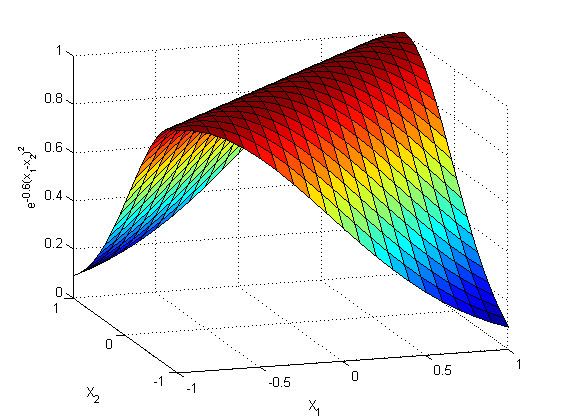 | ||
EigenMoments is a set of orthogonal, noise robust, invariant to rotation, scaling and translation and distribution sensitive moments. Their application can be found in signal processing and computer vision as descriptors of the signal or image. The descriptors can later be used for classification purposes.
Contents
- Framework summary
- Problem formulation
- Rayleigh quotient
- Simultaneous diagonalization
- Information loss
- Eigenmoments
- 1D signal
- Example computation
- 2D signal
- EigenMoment invariants EMI
- References
It is obtained by performing orthogonalization, via eigen analysis on geometric moments.
Framework summary
EigenMoments are computed by performing eigen analysis on the moment space of an image by maximizing Signal to Noise Ratio in the feature space in form of Rayleigh quotient.
This approach has several benefits in Image processing applications:
- Dependency of moments in the moment space on the distribution of the images being transformed, ensures decorrelation of the final feature space after eigen analysis on the moment space.
- The ability of EigenMoments to take into account distribution of the image makes it more versatile and adaptable for different genres.
- Generated moment kernels are orthogonal and therefore analysis on the moment space becomes easier. Transformation with orthogonal moment kernels into moment space is analogous to projection of the image onto a number of orthogonal axes.
- Nosiy components can be removed. This makes EigenMoments robust for classification applications.
- Optimal information compaction can be obtained and therefore a few number of moments are needed to characterize the images.
Problem formulation
Assume that a signal vector
Dimension of signal space, n, is often too large to be useful for practical application such as pattern classification, we need to transform the signal space into a space with lower dimensionality.
This is performed by a two-step linear transformation:
where
Finding
where N is the correlation matrix of the noise signal. The problem can thus be formulated as
subject to constraints:
It can be observed that this maximization is Rayleigh quotient by letting
Rayleigh quotient
Optimization of Rayleigh quotient has the form:
and
This constraint optimization problem can be solved using Lagrangian multiplier:
equating first derivative to zero and we will have:
which is an instance of Generalized Eigenvalue Problem (GEP). The GEP has the form:
for any pair
Finding
One way of maximizing Rayleigh quotient is through solving the Generalized Eigen Problem. Dimension reduction can be performed by simply choosing the first components
The other method to look at this solution is to use the concept of simultaneous diagonalization instead of Generalized Eigen Problem.
Simultaneous diagonalization
- Let
A = X T C X andB = X T N X as mentioned earlier. We can writeW as two separate transformation matrices:
-
W 1
Where
Let
- Let
and hence:
- Then, we diagonalize
W 1 T A W 1
where
- Finally the transformation is given by:
where
Information loss
To find the information loss when we discard some of the eigenvalues and eigenvectors we can perform following analysis:
Eigenmoments
Eigenmoments are derived by applying the above framework on Geometric Moments. They can be derived for both 1D and 2D signals.
1D signal
If we let
In practice it is difficult to estimate the correlation signal due to insufficient number of samples, therefore parametric approaches are utilized.
One such model can be defined as:
where
Since
The correlation of noise can be modelled as
Using the computed A and B and applying the algorithm discussed in previous section we find
and are orthogonal:
Example computation
Taking
and
2D signal
The derivation for 2D signal is the same as 1D signal except that conventional Geometric Moments are directly employed to obtain the set of 2D EigenMoments.
The definition of Geometric Moments of order
which can be denoted as
where
EigenMoment invariants (EMI)
In order to obtain a set of moment invariants we can use normalized Geometric Moments
Normalized Geometric Moments are invariant to Rotation,Scaling and Transformation and defined by:
where:
